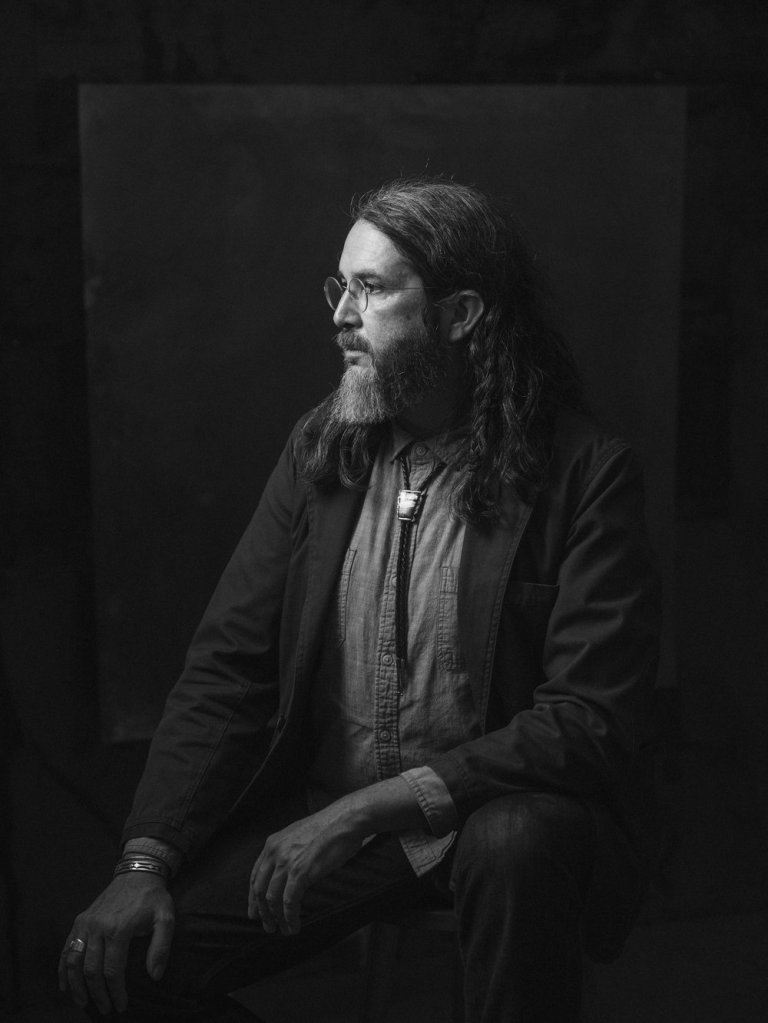Russel Daniels is a writer, photographer and filmmaker who graduated from the J-School in the Spring of 2009 with a BA in photojournalism. Through photography and storytelling, Daniels’ work brings attention to Native American and underserved communities’ history and culture.
In a recent Q&A with graduate student Sage Sutcliffe, Daniels shares how he gained the technical skills to tell an “impossible” story he has wanted to tell since before entering the J-School. Daniels’ photo essay The Genízaro Pueblo of Abiquiú was recently featured at the Smithsonian National Museum of the American Indian, the first chapter of many regarding the Native American enslavement in the Southwest. An edited transcript of the conversation follows.
What are you currently passionate about?
The thesis of this project is the legacy of Spanish colonial era Native American enslavement and captivity in the Southwest. In the last few years I’ve been meeting other descendants, Genízaro descendants, and other people that have captivity in their families throughout Northern New Mexico. I was meeting them and going to visit them and just not even taking photos, but just talking and hearing their stories.
The topic predates and postdates the transatlantic slave trade. It literally didn’t stop after the Civil War in New Mexico. On my dad’s side, we are Diné, Navajo, and our ancestor was taken captive in the middle 1800s by Utes.
So I can almost say I went to journalism school to tell that story, really. I’m like, that’s exactly what I wanted. I wanted to learn how to tell a story, and then that was the story I really wanted to tell.
So even back then, this was on your mind?
It was on my mind, but it seemed impossible. How do you document, photograph history? It’s almost impossible. Out here in the West where it’s dry, a lot of things are preserved. If it was humid and moist, things would dissolve and or get overgrown and collapse. But out here, especially in the deep Red rock desert on the Colorado plateau, things are well preserved. So, you got ancestral pueblo and sites still around, so you can photograph stuff like that. But I didn’t realize at the time way back then that there were still communities of descendants still living in New Mexico, but that’s what all my research led me to.





Is there anything that you learned at the J-School that you still utilize today or you’re glad you learned?
The most valuable tool that I’ve ever had in my career is learning how to write, learning how to pitch stories, learning how to research, learning how to interview, learning how to ask the right questions. And a lot of that does revolve around writing. And I think that’s the thing that I often tell students or younger people that are interested in photography and photojournalism, even artists—learning how to write about your work, cause it’s how you’re going to get paid.
What’s your favorite subject to capture through the lens?
I love wandering in my neighborhood or walking in a new town and just wandering it. I love to find the ordinary and make a photo of it. It’s usually a detail that’s fascinating to me. Or maybe a little lighting. Some people are just like, ‘Oh my God, I can’t believe that you just made that photo of something so boring and made it interesting.’ So, that’s my daily work. My day really is walking around and taking photos just for fun, seeing things.
What would you like students to know about the field of photography?
Just keep doing it, and keep doing it even when you’re not feeling it. This kind of applies, I think, towards a lot of creatives in general. You can’t just rely on inspiration to make good work. You’ve got to develop skills and discipline and habits to be able to work through when you’re feeling uninspired. Being an artist, being a creator, content maker, you’ve got to know how to work through all your personal issues and just keep creating.

